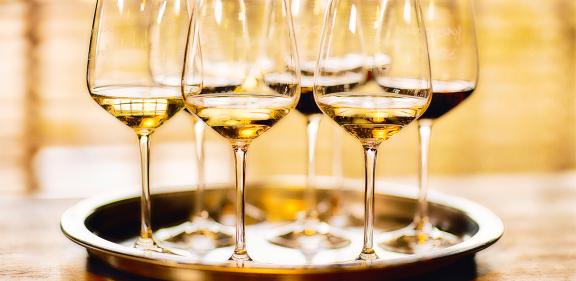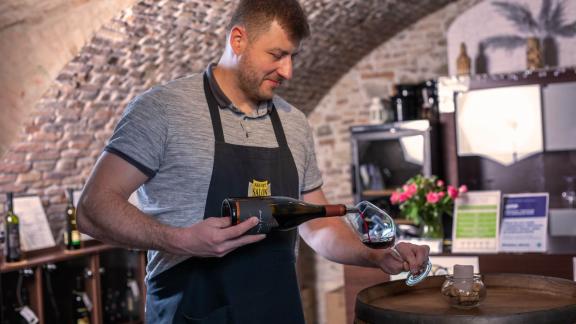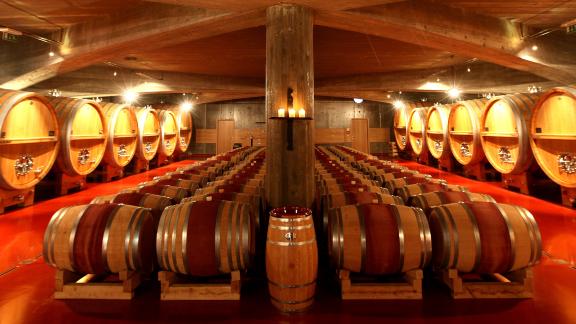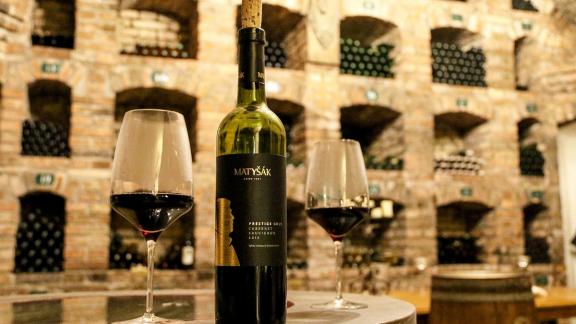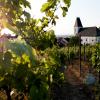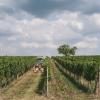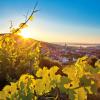Slovak Wine: Seeing (and Tasting) is Believing
Introduction to Slovak wine
The bible of wine-lovers, The World Atlas of Wine, devotes barely half a page to Slovakia. On the face of it, this is a remarkable oversight: this region has been a centre of wine-growing for more than a millennium, and the main settlements of southwestern Slovakia, including the capital, Bratislava, were built around the wine trade.
The main explanation is that Slovak wine is rarely found on sale outside the country’s borders. Slovaks themselves – who are impressively discerning drinkers – consume most of the nation’s relatively small output. They have good reason to: that output includes some outstanding wines.
In effect, Slovakia is best thought of as a boutique wine producer, operating on a national scale. A host of independent, typically family-owned, vineyards produce a range of varieties, often on a small scale – but to a very high standard. They have consistently scored notable successes in major international wine competitions.
As qualified wine taster and competition evaluator Gabriela Rizikyová notes, “the main characteristic of Slovak wine production is diversity.”
What this means is that whether you are a World Wine Atlas critic or an enthusiast interested in experiencing new flavours and traditions, the only real way to experience Slovak wine is to pay a visit.
A diversity of flavours
Wine-lovers who take the trouble to visit Slovakia can enjoy an unusually wide range of styles within just one corner of this relatively small country.
Most Slovak wine production – and the majority of its specialist independent winemakers – are found in the southwest of the country, in three of Slovakia’s six wine regions.
The south-facing slopes of the Little Carpathian (Malé Karpaty) hills, which stretch northeast of the capital, along with a handful of sites in the adjacent Váh valley, form one such region, the Small Carpathian. Its rocky soils are the source of some of Slovakia’s most interesting whites.
Along the Danube (Dunaj) river, which forms the border with Hungary, is the Southern Slovak wine region, which benefits from the slightly warmer climate and richer alluvial soils laid down by central Europe’s longest river. It is the source of much of Slovakia’s red-wine production.
Slightly further west, as the landscape begins to roll (much of central Slovakia, unlike the southwestern corner, is mountainous) lies the Nitra wine region, where more or less every variety is grown.
Traditional, and with bubbles
When it comes to local highlights, wine taster Gabriela Rizikyová cites a particular Slovak strength: its excellent rosé wines, most notably from Frankovka modrá (Blaufränkisch), Cabernet Sauvignon and Rulandské modré (Pinot Noir) grapes. “Our rosés are fresh, not tired, and carry a lot of fruit nuances, with original aromas,” she comments, citing the awards they have harvested.
Dominik Baránek, sommelier at Víno Matyšák, one of Slovakia’s leading winemakers, recommends enjoying a local sparkling wine as an aperitif. He notes that Slovakia has a long tradition of making sparkling wines and was the first country after France to adopt the in-bottle méthode traditionelle; it also employs the blends of grapes used in France’s Champagne region. However, some Slovak sparkling wine is also produced with the charmat method – often with more aromatic varieties – so it is easy to try both together, and compare.
The reason for the absence of Slovak wines from restaurants and wine merchants abroad – despite their success in competition – becomes more apparent when one appreciates the small scale on which some of the local varieties are grown. Few of the unique Slovak grape types – like Breslava, Dunaj or Devín – are grown on more than 200 hectares, and many on considerably less.
With more than 500 registered winemakers in Slovakia, Baránek acknowledges that choosing the right wine can be a bit confusing for people unfamiliar with the local labels. He recommends doing a little research on specific wineries – many offer tastings and cellar door sales – to find out about their product lines. The larger winemakers, for instance, typically supply volume outlets like supermarkets under one label, but use others for their best vintages, or to denote specific wine-making methods.
This is the case for Baránek’s employer, Víno Matyšák, whose high-quality table wines can be found in retailers throughout Slovakia under its Selection and Prediction labels, but whose Prestige and Prestige Goldlabels, which are single-vineyards origin wines that have earned awards internationally, are sold only in Matyšák’s own wine-shops and restaurants, or via private client sales. Mrva & Stanko offers something similar with its premium Winemaker’s Cut label.
By contrast, a small producer like Terra Parna will normally have just a single label, and a handful of varieties each year.
Heartfelt wine
Getting around Slovakia is easy: there is little traffic outside Bratislava and all the wineries in the southwestern part of the country are within an easy drive of each other. Remember that Slovak law forbids drivers from consuming any alcohol, so if you want to tour and taste independently you’ll need a designated driver.
Young people in Slovakia typically speak good English; German is common among older winemakers. But Slovak vineyards are used to welcoming foreign visitors and will present their wines to you without difficulty, whatever language you speak.
The best single location to get a feel for Slovak wines is probably the National Collection of Wines (Národný salón vín), which is located in the cellar of a Renaissance palace right in the heart of Bratislava’s mediaeval old town. It offers comprehensive tastings of wines from across Slovakia, and maintains a catalogue, updated annually, of what its sommeliers judge to be the top 100 Slovak wines.
Wine evaluator Gabriela Rizikyová sums up the defining quality of the local vintages: “The main added value in our wines is that they are both ‘handmade’ and ‘made with heart’.”
But it’s only with a visit to Slovakia that you will confirm the truth of her words for yourself.
